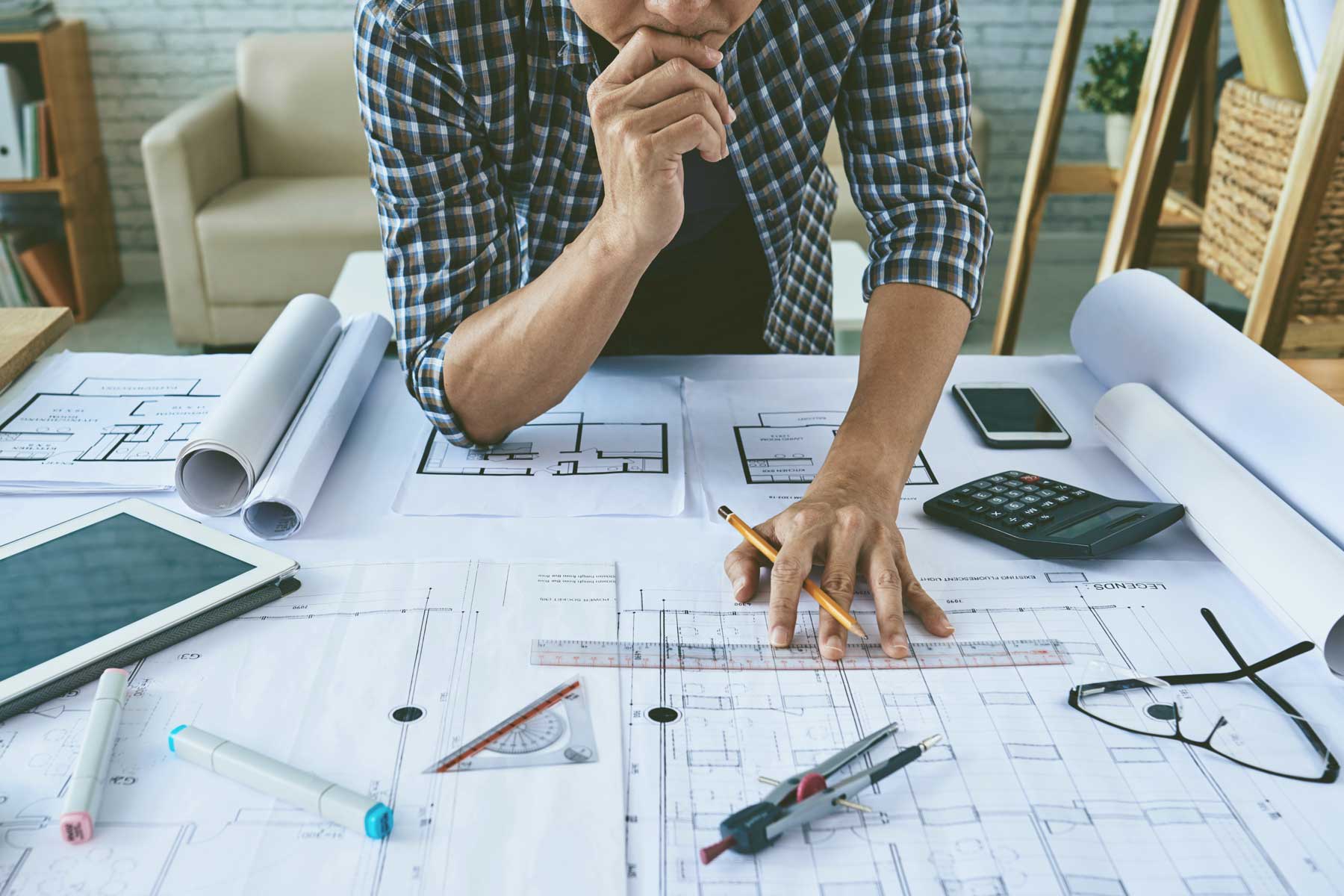Architect Workflow Enhancement for More Efficient Project Delivery
Architect Workflow Enhancement for More Efficient Project Delivery
Blog Article
Recognizing the Diverse Profession Paths Available for Aspiring Architect
As an ambitious Architect, you have a world of occupation courses waiting for you. Each course offers special challenges and chances to apply your imagination and technological expertise. Whether you're attracted to conventional architecture or the nuances of lasting design, there's a particular niche that aligns with your rate of interests. Understanding these diverse options can form your professional journey, yet which instructions will you choose to discover first?
Traditional Design: Creating Structures and buildings
Conventional design concentrates on making buildings and structures that blend capability with aesthetic charm. As you explore this area, you'll value the elaborate equilibrium in between form and function. You'll learn to draw ideas from historic styles, incorporating elements like proportion, materials, and workmanship. Your designs can show cultural heritage, showcasing local customs while meeting modern requirements.
You'll establish abilities in drafting, model-making, and site evaluation, allowing you to picture and connect your ideas properly. Involving with customers, you'll need to comprehend their vision and convert it right into possible styles.
In addition, constructing codes and sustainability methods are essential in your work, guaranteeing your structures are secure and eco-friendly. As you grow in your job, you'll find opportunities in residential, industrial, and even reconstruction projects, each offering unique challenges. Accepting traditional design leads the way for a satisfying profession that admires the past while forming the future.
Urban Preparation: Shaping Communities and Public Spaces
As an aspiring Architect, you can play an essential function as an urban coordinator, transforming just how neighborhoods connect and operate. By employing community involvement approaches, you'll guarantee that homeowners have a voice in shaping their atmosphere. Plus, integrating sustainable style concepts will certainly aid create areas that not only fulfill today's needs however likewise secure the future.
Function of Urban Planners
While several may think about engineers as the sole visionaries behind structures, metropolitan organizers play an essential duty in forming the more comprehensive landscape of neighborhoods and public spaces. They assess land usage, zoning legislations, and neighborhood requires to create lasting settings that boost lifestyle. By teaming up with numerous stakeholders, you'll help develop parks, transportation systems, and houses that promote social interaction and ease of access. Urban coordinators additionally concentrate on environmental considerations, ensuring that advancements incorporate green areas and assistance biodiversity. Your knowledge in spatial design and neighborhood characteristics enables you to envision future development while protecting social heritage. In this essential role, you'll straight affect exactly how people experience their surroundings, making every job a possibility for favorable adjustment.
Neighborhood Interaction Techniques
Efficient community engagement methods are essential for urban organizers to ensure that the voices of residents are listened to and valued in the preparation process. To foster significant dialogue, you should prioritize open online forums and workshops where neighborhood members can share their concepts and concerns. By proactively integrating and paying attention feedback, you'll develop areas that show the community's requirements, ultimately leading to more lasting and effective urban atmospheres.
Sustainable Layout Concepts
When developing city areas, integrating lasting design concepts is essential for developing environments that prosper both ecologically and socially. You ought to start by concentrating on energy effectiveness, utilizing products that minimize waste and advertise recycling. Think about integrating green areas, like gardens and parks, to boost biodiversity and improve air high quality. Advertising walkability and public transport can minimize reliance on vehicles, fostering a much healthier area.
Designing with water preservation in mind is additionally essential-- believe concerning rain gardens and permeable surfaces to take care of stormwater. Involving area members throughout the planning procedure warranties that the spaces you develop satisfy their requirements and encourage social communication. By accepting these principles, you'll add to vibrant, sustainable city landscapes that profit everybody.

Landscape Style: Producing Lasting Outside Settings
As you explore landscape design, you'll uncover crucial layout concepts that develop functional and lovely exterior areas. Sustainable practices play a crucial function in making sure these environments grow while lessening environmental influence. And also, you'll find a range of occupation chances that permit you to make an actual distinction in exactly how individuals interact with nature.
Style Principles in Landscape
Recognizing style principles in landscape architecture is important for producing sustainable outdoor environments that balance with nature. You'll require to consider aspects like percentage, range, and balance to ensure your designs feel cohesive and welcoming. Including indigenous plants not just boosts biodiversity but also lowers water usage, making your landscape durable. Consider the circulation of space and exactly how people communicate with it; pathways and seating locations must invite expedition and relaxation. In addition, take note of seasonal changes, developing with products that enhance the environments year-round (Architect). By focusing on sustainability and aesthetics, you can produce exterior rooms that enrich the neighborhood and promote wellness. Welcoming these principles will certainly establish a solid structure for your occupation in landscape style.
Sustainable Practices Review
Lasting techniques in landscape style not just concentrate on looks yet also prioritize environmental health and wellness and resource conservation. By integrating indigenous plants, you improve biodiversity and minimize the demand for chemical fertilizers and pesticides. Executing efficient watering systems aids save water and reduces drainage, protecting neighboring communities. You can create spaces that promote dirt health and wellness, such as making use of natural products and practicing permaculture principles. Furthermore, incorporating environment-friendly facilities, like rainfall yards and porous pavements, help in stormwater management and minimizes metropolitan warmth. You contribute to a much healthier planet and supply areas that promote neighborhood connection when you create outdoor settings with sustainability in mind. Eventually, these practices guarantee your styles profit both individuals and the environment for many years to come.
Career Opportunities Exploration
With a solid structure in sustainable practices, landscape style uses a variety of occupation paths that permit you to make a purposeful influence on the setting. Urban planners commonly collaborate with landscape designers to develop environment-friendly spaces in urban settings, boosting city livability. If you're enthusiastic concerning education and learning, think about ending up being a landscape architecture educator, inspiring future generations.
Lasting Style: Concentrating On Eco-Friendly Practices
As you discover your career in design, accepting eco-friendly methods can set you apart in an affordable field. Sustainable layout concentrates on creating buildings that lessen ecological influence while improving resident health. By integrating sustainable materials, energy-efficient systems, and lasting building techniques, you'll add to a greener future.
Start by obtaining knowledge of environment-friendly accreditations like LEED or BREEAM, which can bolster your qualifications. Take into consideration just how natural light, ventilation, and thermal efficiency can maximize design. Work together with designers and environmental professionals to introduce services that lower waste and conserve resources.
Do not forget the relevance of area involvement-- appealing neighborhood stakeholders can motivate designs that balance with the setting. As clients progressively focus on sustainability, your competence in eco-friendly methods will certainly not just draw in tasks yet additionally satisfy your interest for accountable style. Welcome this essential element of the occupation, and see your job prosper.
Historic Conservation: Safeguarding and Recovering Social Heritage
While you commence on see here your architectural trip, consider the important role of historical preservation in preserving our social heritage. This area concentrates on the protection and remediation of significant buildings, sites, and structures that inform the stories of our past. By taking part in historic preservation, you'll assist safeguard the building legacy that forms community identification.
As a historical preservation Architect, you'll assess historic significance and assess the condition of structures. You'll work carefully with guardians and chroniclers to assure authentic remediation strategies are used. This profession course permits you to mix imagination with study, allowing you to make options that respect initial materials and craftsmanship.
Your work not just adds to sustainability by reusing existing structures however also promotes a feeling of pride within neighborhoods. Accepting this course will aid you come to be a guardian of background, protecting the stories and appearances that enrich our lives.
Interior Design: Enhancing Indoor Spaces
Historical conservation and indoor style both share a commitment to improving the constructed setting, yet they concentrate on different aspects. While historical preservation stresses keeping a structure's historical and social value, indoor architecture absolutely nos in on enhancing indoor areas for capability and appearances.
As an aspiring Architect, you'll find that interior design permits you to mix creativity with technical skills. You'll make areas that not just look great but likewise promote comfort and performance. This field entails comprehending exactly how light, shade, and products communicate within a space, influencing state of mind and usability.
You'll service numerous projects, from domestic homes to business workplaces, guaranteeing that each environment fulfills the requirements of its passengers. By focusing on customer experience, you can change interiors right into functional and motivating spaces, making a substantial influence on just how individuals connect with their surroundings. Embrace the opportunity to boost interior atmospheres and shape the way people live browse around here and work.
Industrial Layout: Merging Performance With Looks
Industrial style plays an important function in developing products that effortlessly blend aesthetic appeals with performance, guaranteeing that what you use day-to-day is not just aesthetically enticing but likewise functional. As an ambitious Architect, you might involve yourself in this area, concentrating on making whatever from furnishings to customer electronic devices. Your job involves understanding customer requirements, materials, and manufacturing procedures, allowing you to create cutting-edge services that boost daily experiences.
In industrial layout, you'll typically work together with marketing experts, makers, and designers, making certain that your layouts are not just attractive but likewise viable. This occupation path supplies a vibrant atmosphere where imagination meets practicality, making it a rewarding selection for architects interested in forming the products of tomorrow.
Frequently Asked Questions
What Educational Accreditations Do I Required to Come To Be an Architect?
To end up being an engineer, you'll require an expert degree in style, typically a Bachelor's or Master's. In addition, you'll have to complete an internship and pass the Architect Enrollment Assessment to practice lawfully.
Are There Qualification Needs for Various Architectural Job Paths?
Yes, there're qualification needs for numerous building paths. Architect. You'll need to pass tests, complete internships, and sometimes pursue specialized training, relying on your picked focus, like landscape architecture, city style, or historical preservation
What Software Abilities Are Vital for Designers Today?

Exactly How Can I Gain Practical Experience While Studying Architecture?
You can obtain practical experience by interning at architectural firms, getting involved in design competitors, offering for community projects, or working together with classmates on real-world projects. These chances enhance your skills and construct valuable connections in the market.
What Job Opportunities Exist Outside Standard Design Firms?
You can check out different work chances outside typical design companies, like urban preparation, interior decoration, landscape design, building and construction monitoring, property advancement, or perhaps functions in sustainability consulting. Each offers one-of-a-kind difficulties and rewards.
Whether you're attracted to conventional design or the nuances of lasting layout, you could try here there's a specific niche that lines up with your interests.When making city areas, integrating lasting layout concepts is important for creating environments that flourish both environmentally and socially.As you discover landscape design, you'll find vital design principles that produce attractive and useful outdoor areas.Understanding layout principles in landscape style is necessary for developing sustainable exterior environments that balance with nature.In commercial design, you'll typically collaborate with designers, online marketers, and producers, making sure that your styles are not just attractive yet also possible.
Report this page